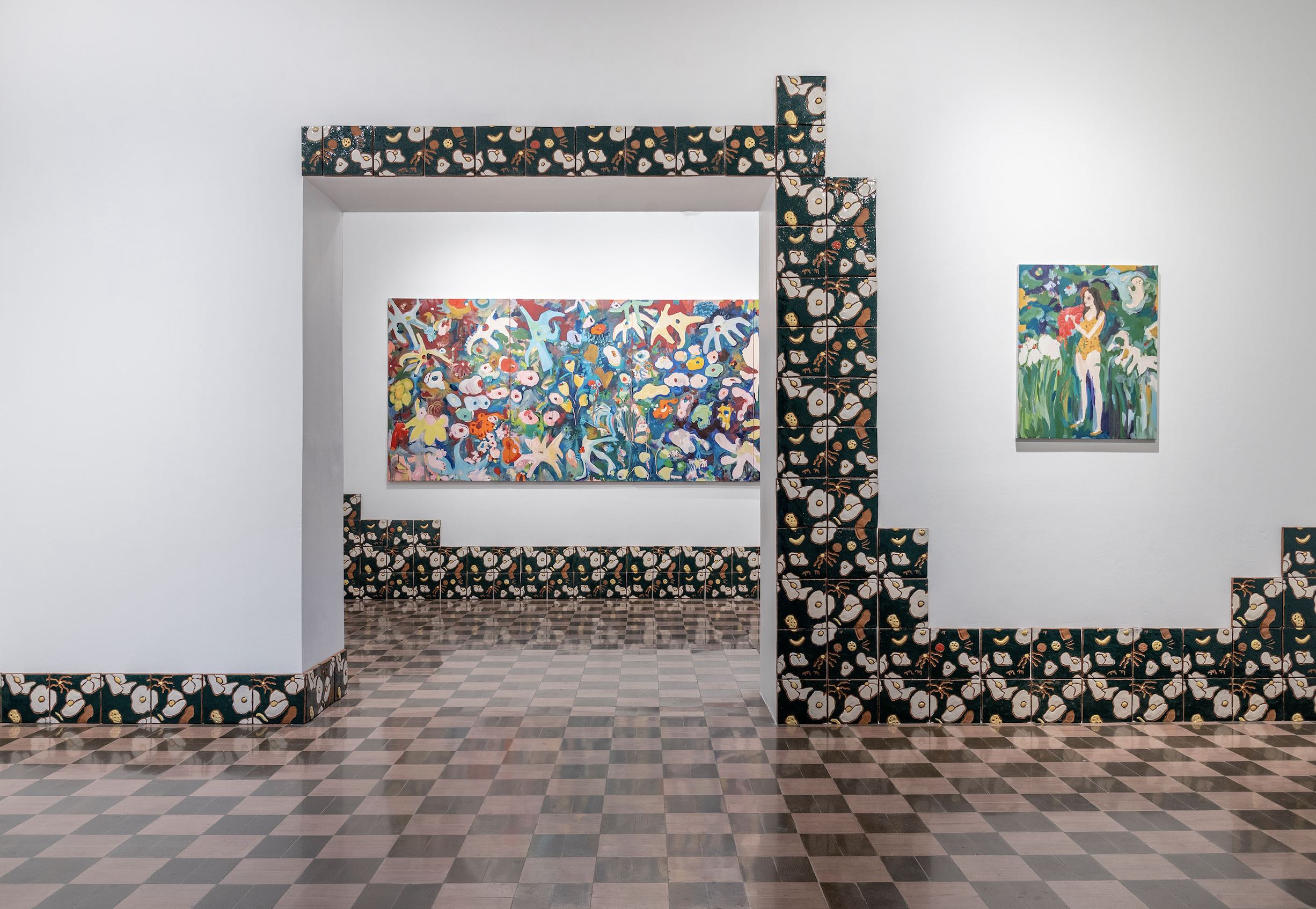
Review
A Rock that When Turned Over is a Branch: On 'Frequent Visitors' by Milena Muzquiz
by Mayra Vineya
At Travesía Cuatro
Reading time
4 min
points flowers circles flowers ellipses flowers radii
flowers tangents flowers quadrants flowers lines flow-
ers etc. flowers
birds with clipped wings beak to tail com-
pletely still
keep mincing along the tangent It
has begun
in the center the rosette of wings It was there
that it began Begins
designed like a garden but with no entrances
paths or exits
possible interpretation: a mirror
for what can’t be seen
— “Stage", Inger Christensen *1
At the corner of Calle Simón Bolívar and Avenida La Paz in the city of Guadalajara stands Casa Franco, built in 1929 at an early stage in the career of architect Luis Barragán. The house currently serves as the premises of the gallery Travesía Cuatro and forms part of a circuit of spaces within the Lafayette neighborhood dedicated to the production, sale, and exhibition of contemporary art.
From February 4 to May 7 this site is hosting Frequent Visitors by Milena Muzquiz. The exhibition is made up of a series of paintings, functional ceramics, and a mural of glazed tiles, all of them communicating with and flowing directly into the house’s architecture.
Entering the place brings with it the feeling of going into a stone garden that, more than a dream, seems to narrate a series of beginnings and stories that scarcely enunciate their principles using images. Going through the inner garden is a matter of going through those spaces where fantasy and perception operate at the same time. The pieces are made at a stage in which the artist seeks to return to her own memories and simple appreciations of the moments and spaces where she has found herself.
Muzquiz will say that facing each of the paintings is like witnessing the story of her entire personal life. Thus, they operate as fractals of self-perception and self-narration. Memory studies indicate that childhood memories function as fragments rather than as a legitimate story. Lasting memories are often formed from the acquisition of language, when children begin telling stories about their own lives. Before language—through which we are able to name ourselves—there is haze, but also the narrations of those others who construct us in a second voice.
The artist seeks in clear memories to return to those adventures on which her mother once took her: to mountains and hills, to corn and to fishing trips with her father. The background reveals fugitive memories.
The artist portrays herself as someone alone, but also as a series of women whose clothes flow within the landscape of memories. The fabrics dressing her are at moments flowers and at other moments an expanding body. Paintings that levitate and also leave in those observing them a sensation of floating by their side.
For their part, the tiles made in collaboration with Cerámica Suro can be seen as labyrinths with exits that extend further as we walk through them.
Although as one proceeds through the exhibition there is a constant sensation of walking on a puddle, to its side we observe from a display case a series of fountains marked by the unfolding of a series of fantasy beings through which the water finally flows.
Even if the artist’s current production is typically related to that theatricality inherited from her earlier work in performance, especially her role in Los Súper Elegantes (an art group she led in the 90s with Argentine Martiniano López Crozet), on this occasion it seems rather that there is a direct relationship with music. Each of the materials presented is accompanied by the potential noise of their permanence on the wall as well as a cadence of sounds that end up introducing us and taking us to the imagined place: the same place where the rock ends up being a branch.
Translated to English by Byron Davies
*1: From Inger Christensen, It, translated by Susanna Nied (New York: New Directions Books, 2005), p. 77.
Published on May 12 2022